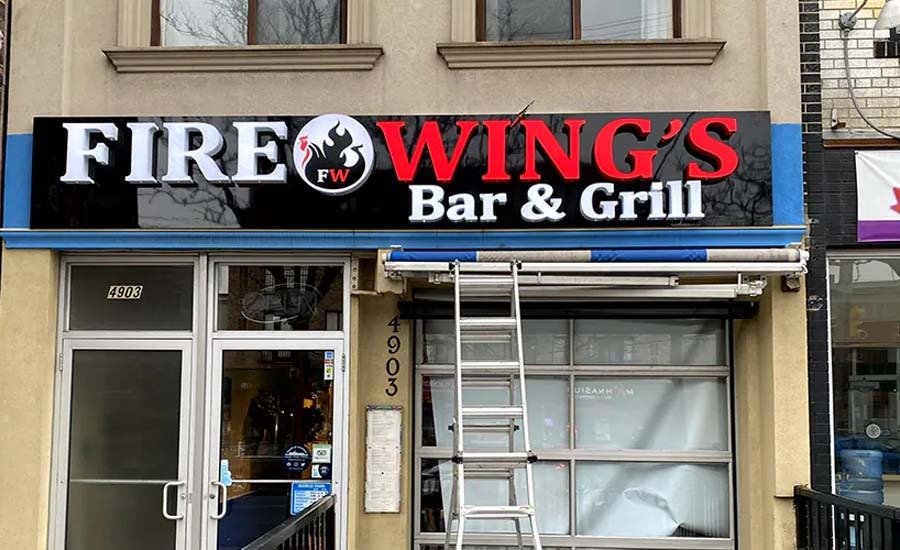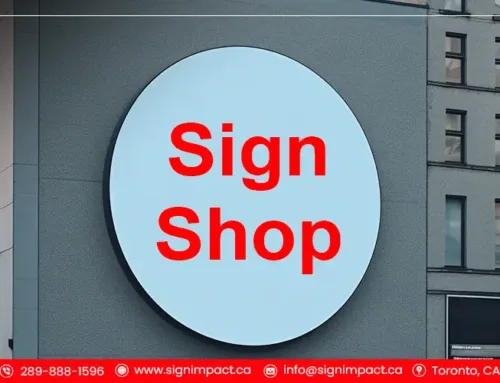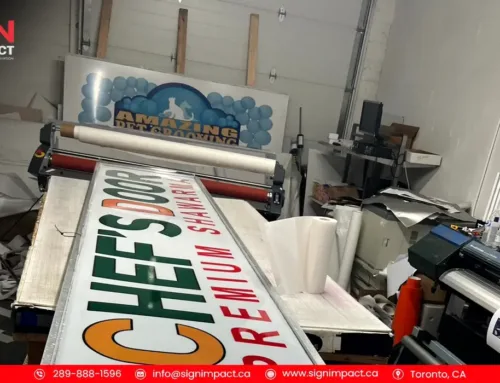In today’s competitive retail environment, standing out is challenging for businesses. Whether you’re a small boutique or a large chain store, every element of your storefront contributes to the overall perception of your brand. Among these elements, signs play a crucial role in establishing your brand identity and engaging with customers.
Signs are often the first interaction between a potential customer and your business. From enticing passersby to reinforcing brand messages, the role of signage in-store branding and customer engagement cannot be overstated.
The Importance of Storefront Signs in Branding
We provide some top points for storefront signs branded:
1. First Impressions Matter
A storefront sign serves as the face of your business. It is the first thing potential customers see, often influencing their decision to enter your store or move on. A well-designed sign instantly communicates your brand’s identity, values, and style. It gives people an idea of what they can expect inside. For instance, a sleek, modern sign might suggest a trendy, upscale store, while a more playful or colorful sign may indicate a fun, casual shopping experience.
In this way, the design of your sign plays a pivotal role in shaping your audience’s perception of your business. If it looks unprofessional or doesn’t match the tone of your brand, it can discourage customers from engaging further. On the other hand, a captivating sign can intrigue passersby and invite them to step inside, transforming them into potential customers.
If you want enhance your business in Milton. Contact us at Signimpact, which provides storefront signs for business services for your brand. Our team properly informed you about our business.
2. Reinforcing Brand Identity
Consistency in branding is critical to building a robust and recognizable business. Storefront signs contribute to this by reinforcing your brand’s message. Elements such as colors, fonts, and logos on your sign should align with your brand identity. When done right, your signage becomes an extension of your brand, conveying the essence of your business even when you’re not directly communicating with your customers.
Take large brands like Starbucks or Apple, for example. Their signs are so recognizable that they hardly need words—customers instantly associate the design and color scheme with the brand. While smaller businesses may not have the same global recognition, well-designed signs can contribute significantly to brand consistency, making it easier for customers to remember and engage with your business over time.
Types of Signs That Enhance Branding
Top types of signs that enhance branding:
1. Storefront Signage
Storefront signs are one of the most visible types of signage and can significantly influence a customer’s first impression of your business. These signs must stand out for companies in busy areas or shopping malls to grab attention. Channel letters, neon signs, and LED signs are famous for storefront branding due to their brightness and ability to catch attention even in crowded environments.
2. Window Graphics
Window graphics allow businesses to use their windows as a marketing tool. It can be in decals or posters advertising products, services, or special promotions. Creative window displays can enhance branding by using the available space to communicate a cohesive brand message. The visual appeal of well-designed window graphics can entice people to take a second look, increasing foot traffic.
3. A-Frame Signs and Sidewalk Signs
These portable signs are highly effective in grabbing attention from pedestrians and potential customers who may need to look directly at the storefront. An A-frame sign placed strategically outside your store can communicate special offers, promotions, or upcoming events. These signs are great for businesses that want to update information or promote a limited-time offer quickly.
Customer Engagement through Signage
Some points are available for customer engagement:
1. Attracting Attention
Effective signage is designed to capture the attention of passersby. Bold colors, legible fonts, and compelling graphics can draw the eye, encouraging potential customers to look closer and engage with your brand. You can make your sign memorable and impactful by incorporating key elements such as your brand’s logo, messaging, and humor.
Signs with a clear call to action can also encourage customers to take the next step, whether walking into the store, visiting a website, or following your social media accounts. When designed with customer engagement in mind, signs act as silent salespeople, providing just the correct information to spark curiosity and prompt action.
2. Promoting Offers and Events
One of the most effective ways to engage customers through signage is by promoting offers, sales, or events. It gives customers a reason to enter the store or make a purchase. Signs advertising limited-time offers or exclusive promotions can create a sense of urgency, encouraging immediate action.
Moreover, promoting events like product launches, workshops, or community gatherings via signage can foster a sense of connection between your brand and your audience. Signs promoting such events can drive foot traffic and customer loyalty by positioning your store as an integral part of the local community.
3. Guiding and Enhancing the Customer Experience
Signs are essential in guiding customers through the store and improving their shopping experience. Directional and informational signs help customers easily navigate your space, reducing confusion and enhancing their visit. When customers feel comfortable and find what they’re looking for quickly, they are more likely to engage positively with your brand.
In addition, digital signage can provide interactive elements, such as touch screens, that allow customers to learn more about products, check stock, or explore special promotions. This level of engagement makes the shopping experience more enjoyable and can differentiate your store from competitors.
Tips for Creating Effective Store Signs
We explore tips for creating store signs:
1. Clarity and Simplicity
The most effective signs are those that convey their message quickly and clearly. Avoid cluttered designs or overly complicated messaging. Instead, opt for clean layouts highlighting the most critical information, such as your business name, a call to action, or an essential promotion.
2. Readable Fonts and Sizes
A sign’s purpose is defeated if it’s unreadable. Use fonts that are easily read from a distance, and ensure the text size is appropriate for the sign’s location. A good rule of thumb is to ensure that potential customers can read your sign within a few seconds of passing by.
3. Contrast and Color
High-contrast signs are easier to read and more visually appealing. Using bold, contrasting colors ensures that your sign stands out and is legible from a distance. While staying true to your brand’s color scheme is essential, don’t shy away from experimenting with high-impact color combinations that grab attention.
4. Consistency with Brand Identity
Your signs should reflect the tone and personality of your brand. For instance, a luxury boutique may opt for minimalist, elegant signage, while a playful toy store might use vibrant colors and fun fonts. Consistency across all signage ensures that your brand is easily recognizable and reinforces your brand message.
Conclusion
Signs are one of the most potent tools for in-store branding and customer engagement. From the moment a customer approaches your store, your signage begins telling your brand’s story. Well-designed, strategically placed signs attract attention and communicate key brand messages, promote customer engagement, and enhance the shopping experience. In a crowded market, effective signage can make the difference between blending in and standing out, helping your business to grow and succeed.




